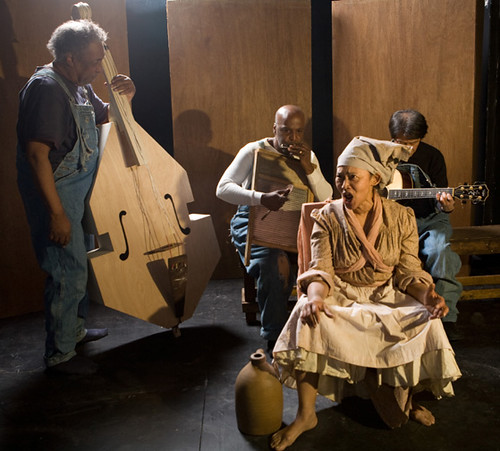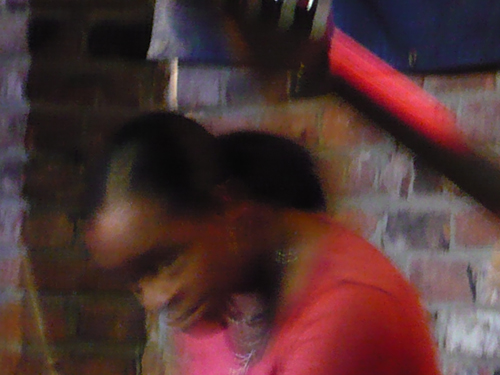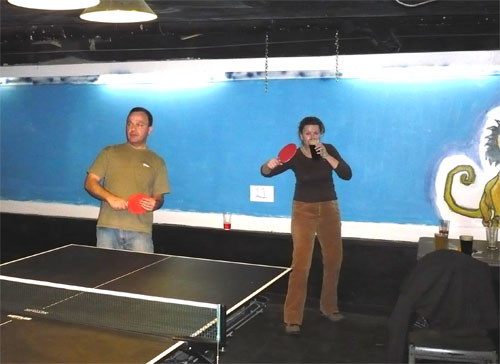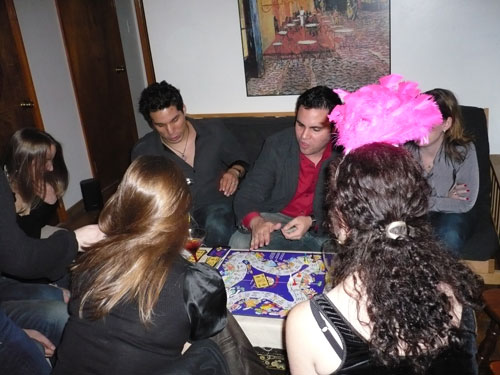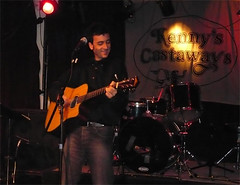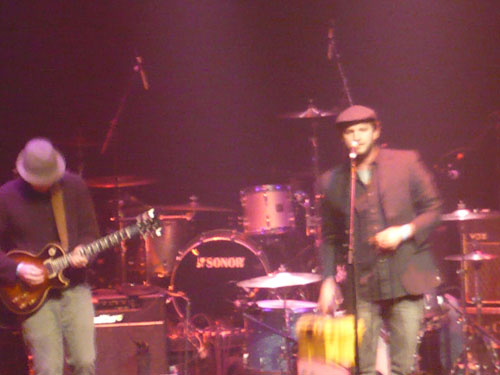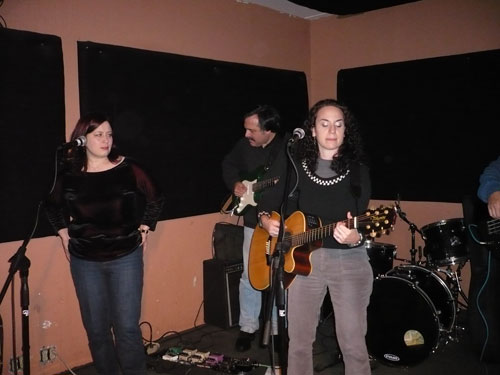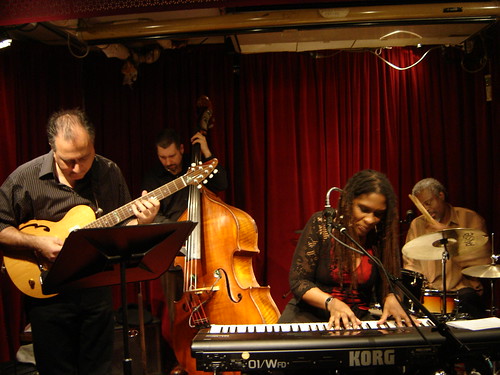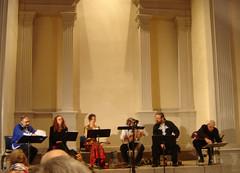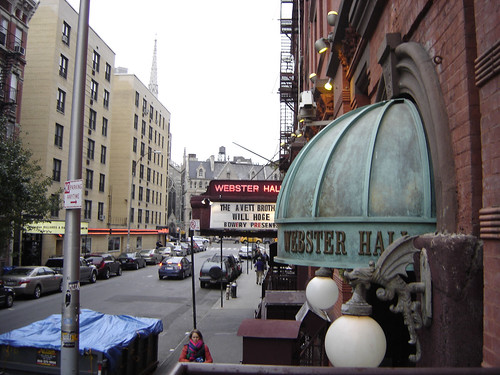This week I have for you some thumbnail sketches of 2007 releases that I didn’t have time to review during the year but are worthy of note for one reason or another. That was going to be the only “theme.” But then I noticed something. Several stunningly attractive women lurked among the CD covers in the pile. And it got me thinking…
Sometimes I wish artists weren’t allowed to put any pictures of themselves on their CD packaging.
Physical appearance can skew one’s expectations unfairly. With very attractive artists, the listener can suffer from a kind of reverse prejudice. The camera adores Kyle Lardner, for example. 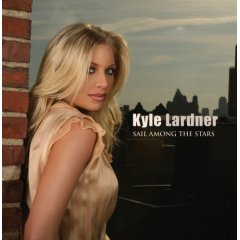 Her stunning photos stress her Sara Michelle Gellar eyes and lead one to think she might be a manufactured pop moppet. Not so – read on for a pocket review of her new CD.
Her stunning photos stress her Sara Michelle Gellar eyes and lead one to think she might be a manufactured pop moppet. Not so – read on for a pocket review of her new CD.
Landon (or Landonband) is fronted by Landon Dunning. Her music is harsh and sore, serious and angry and rocking – Bob Clearmountain mixed it, ’nuff said? – but her face is absurdly beautiful. Landon has addressed this by titling her CD Defying the Stereotype and using a non-glamorous cover photo. 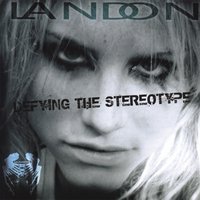 She looks closely into the camera, the black and white emphasizing her raccoon eye makeup, the beginning of a sly grin slightly curling her upper lip. The broken text of the title is stamped right across the middle of her face. So I’m fucking beautiful, she seems to be saying – what am I supposed to do about it? It’s an effective technique. Listen to the forcefulness of the music and it stops mattering what the artist looks like.
She looks closely into the camera, the black and white emphasizing her raccoon eye makeup, the beginning of a sly grin slightly curling her upper lip. The broken text of the title is stamped right across the middle of her face. So I’m fucking beautiful, she seems to be saying – what am I supposed to do about it? It’s an effective technique. Listen to the forcefulness of the music and it stops mattering what the artist looks like.
Just the other day I got word that Lara St. John, whose Bach Violin Concertos is one of my favorite recent classical discs, has a new Bach recording out. When I went to check it out, I read up on the critically acclaimed violinist, and I found that she has a penchant for provocative CD cover poses. (This kind of thing tends not to come up when you’re buying downloads and not CDs.)  Do I now think about this person differently, whom I earlier admired purely for her artistry? In some subtle way, probably.
Do I now think about this person differently, whom I earlier admired purely for her artistry? In some subtle way, probably.
But when I start worrying about these things too much I remind myself that we are all, every one of us, imperfect animals. Artists, fans, blatherers – we may not all take ourselves equally unseriously, but we probably ought to. And artists can’t win – play up your looks and you’re accused of pandering; fail to and you’re passing up your chance for a leg up. I like Landon’s solution, but not everyone can back up the attitude with the good music like she can. So, enough blather and on to more music.
Jon McKiel, The Nature of Things
Speaking of serious, Jon McKiel’s dark alt-rock may have something of the shoegazer to it, but I found it just the thing for driving around the city streets in an angry funk, with its moody sounds and aware lyrics. Listen to some tracks at his Myspace page.
Sheva, The Closest Thing
Here’s another example of looks affecting one’s listening attitude. I was all set to hate this, or just toss it out, based on the washed-out cover photo showing the artist staring blankly into the camera as if a soap opera director had forgotten to say “Cut.” (The fact that my cover letter was addressed to “Dear Dan” didn’t help either.) It turns out, though, to be a solid piano-pop disc with some pretty catchy tunes. Sheva’s voice lacks distinction, the songs are formulaic, and some of the arrangements are overwrought – but I still liked a fair amount of this earnest, straightforward blue-eyed pop disc. Hear three tracks at her Myspace page.
Bronze, Calypso Shakedown
This smooth meld of nu-soul and easygoing disco may come out of Chicago, but it feels like warm climes and beach times. Good songs, Fender Rhodes, strings (real ones, not played on a keyboard), and vocals that alternately suggest the Bee Gees and Earth, Wind and Fire come together to make this a sweet, groovy set of original retro tunes. The songwriting weakens towards the end, but there’s a nice chunk of good stuff, and even the lesser songs go down easy.
The Spoken X, Wild Child
Spoken X pairs chip-on-its-shoulder spoken poetry with heavy, riff-based rock. The results are mixed – some songs just sound pretentious – but when Ted Golder’s lyrics sidestep a tendency to rant and slip into a descriptive or stream of consciousness groove, the songs cohere. Then the music slams with a satisfying crunch, a bit like the Doors of old. “Teo takes a stroll and walks past an old lady dressed in rags talking to her people from outer space / She used to be religious but now she’s found so much more room to express herself.” Hear more of Spoken X expressing themselves.
Kyle Lardner, Sail Among the Stars
For a more effervescent pop experience, try piano-playing songstress Kyle Lardner (mentioned above). With a teenager’s sweet vocal purity, Lardner does shimmery but sophisticated pop that’s a little bit Disney and a little bit rock and roll – nothing too new, but it’ll put the rouge on your cheeks. Songs like “The Blanket Song,” “Aways Away,” and the scintillating, Abba-like “Perfume” feel like elevated teen angst tunes, while “Moral Amnesia” and “When We’re Gone” show an admirable social and philosophical conscience. As a singer Lardner doesn’t have the vocal heft to fully bear her ambitious musical vision, but her songs, couched in these majestic arrangements, show her off well and hold a good deal of promise.
Choose, Untitled
Talk about anti-image. This experiment-minded, female-fronted band makes alternately atmospheric and metallic industrial rock. The song titles are just numbers, and all the printed materials are written backwards, as if to say, Don’t worry about reading this stuff, it’s all about the music. Kinda cool, actually, although it might have been nice if they’d compromised their principles enough to print at least the web address rightways. But it is all about the music – and the experiments. (In concert they match up the audience’s heartbeats with the beat of the music). I’d like to have a chance to catch this group live in the new year. Listen up.
Kickstart, Untitled
Fronted by the gravelly-voiced baritone of singer-guitarist Eric Strickler, these thrashy Brooklyn punkers seem to be as influenced by sixties garage rock as by late-seventies punk. Sometimes Strickler sounds as if he’s going to vomit; other times he growls like Shane McGowan. Or is it the same thing? Either way, the band’s take-no-prisoners rhythms and catchy songs add up to a big panful of rugged rock.
